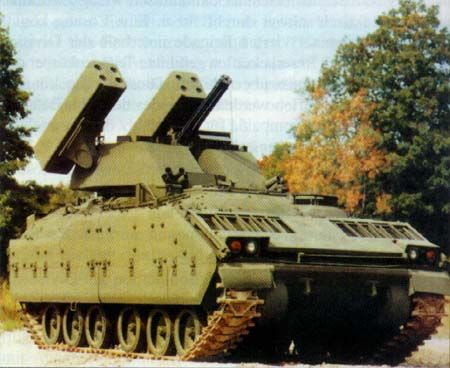
Illustration courtesy of Riley Amos.
Added 7-10-16
Updated 31-8-23
By the 19th century an infantry company could deliver a large volume of rapid, sustained anti-personnel fire. Direct-fire field artillery supplemented this and provided larger-calibre destructive force when needed. Some infantry companies including their own artillery. The adoption of machine guns increased firepower even further, a handful of such weapons being able to deliver more firepower than a company of riflemen.
If we jump forward a few decades, the first tanks make an appearance on the battlefields of World War One. “Female” tanks were armed with machine guns. “Male” tanks mounted six-pounder cannon also.
The male line of tanks continued to evolve. Around the 1940s it diversified into mobile infantry guns, mobile anti-tank guns and mobile flamethrowers. These side-branches later re-joined the main stem to produce the modern main battle tank (MBT). Most modern tanks are essentially still mobile large-calibre guns, a logical evolution of direct-fire artillery and infantry guns.
The female line of tanks did not evolve much. This is surprising since the requirement for mobile sources of massed fire has not gone away. Often air defence vehicles have been drafted into this role. Some of these have been little more than trucks carrying multiple AAMGs or autocannon.
While they have proved effective, air defence systems are less than optimal in this role. Most are only lightly armoured or unarmoured. Many are open-topped designs, leaving the crew vulnerable. Many armies assume they will enjoy air superiority so air defence systems that can provide ground fire may not be available.

What is needed is a vehicle that mounts a high rate of fire primary weapon system with adequate levels of armour and other defensive features.
The “Threat Suppression Vehicle” (TSV) may be thought of a variant of female tank, or intermediate between female tanks and flak-tanks.
The threat suppression vehicle would not replace air defence platforms.
The modern air defence system needs to deal with both manned and unmanned targets. Proposals have been made to provide air defence systems witha capability against enemy missiles, artillery and rocket projectiles too (“C-RAM”). In addition to gun and missile systems it seems likely that air defence systems will soon include directed energy weapons (DEW) to blind or disrupt target guidance systems.
The threat suppression vehicle can be a useful supplement to air defences. Technologies such as “slew to cue” (SLC) would allow them to fire upon targets detected by more sophisticated air defences.
Ground to air capability is, however, only a secondary function of the threat suppression vehicle. The threat suppression vehicle would be crewed by tankers rather than by artillery or ADA personnel. It is designed to have sufficient survivability to operate alongside MBTs and infantry.
TSVs are likely to mount some weapon systems designed to engage ground targets, such as automatic grenade-launchers and ATGW.
The main guns of MBTs have limited elevation, preventing them engaging some targets in urban, hilly or mountainous terrain. TSVs will prove to be useful support in such conditions.
The Canadian Skink tank saw combat in a TSV role.
Proposed variants of the M551 Sheridan tank included vehicles mounting M61 20mm Vulcan cannon. These also mounted radar so were clearly intended for an air-defence role. Also suggested was a variant mounting two 25mm cannon and no radar. This was described as a “rapid-fire weapon system”.

The existing Russian BMPT “Terminator” is effectively a threat suppression vehicle, although the Russians labelled it a “tank support combat vehicle”. Primary armament is a pair of 30mm 2A42 cannon with a rate of fire of 300 rpm each. These are supplemented by machine guns, automatic grenade launchers and ATGW.
Another weapon system with potential for the threat suppression role is the AU-220M turret with a 57mm autocannon firing at 80/120 rpm. This has been described as an anti-aircraft system but has the potential to engage most battlefield targets short of an MBT. A variant also mounting the 9M120 Ataka ATGW has been suggested as a possible armament for the T-15 Armata. This proposal may remind some readers of the experimental German Marder variant with 57mm gun and TOW launcher.
Other possible armaments for threat suppression vehicles include the 25mm GAU-12 used in the Blazer air defence turret and the 35/50mm autocannon with programmable ammunition as used in Danish CV90s.

Recent conflicts have seen extensive use of fast-moving civilian vehicles that may be difficult for heavy tank guns to track. Such targets are another potential application for threat suppression vehicles.
Heavy IFVs are a prudent starting point for the creation of a threat suppression vehicle. The main modification is to remove the infantry accommodation in favour of increased ammunition capacity. Multiple weapons are preferred to provide redundancy and a greater volume of fire. Technologies such as programmable air-burst ammunition provide even greater potential.
Lighter threat suppression vehicles would prove useful in the rapid-response role.
An existing example of such a vehicle is the Columbian AM8 vehicle. This is a M8 Greyhound armoured car mounted with quad .50 calibre machine guns. It appears to have been created specifically for a counter-insurgency role rather than being a retasked air defence system.
The M197 20mm cannon is another possible armament for lighter threat suppression vehicles.
By the Author of the Scrapboard : | |
|---|---|
 | Attack, Avoid, Survive: Essential Principles of Self Defence Available in Handy A5 and US Trade Formats. |
 | |
 | Crash Combat Second Edition with additional content. Epub edition Second Edition with additional content. Crash Combat Third Edition Epub edition Third Edition. |
 | |
 | |